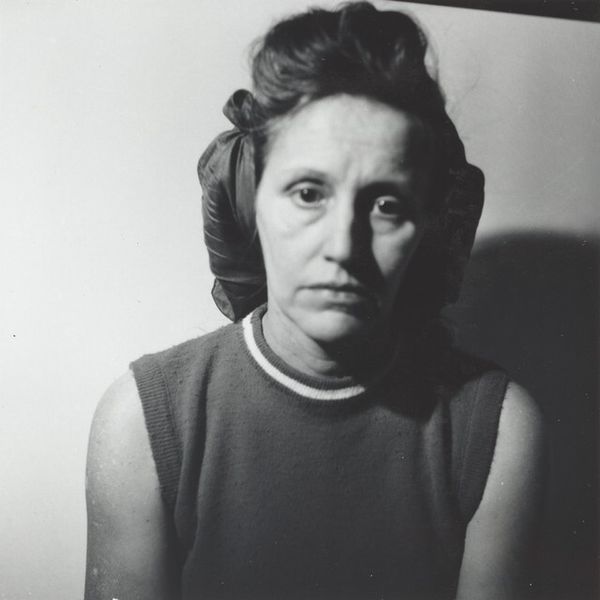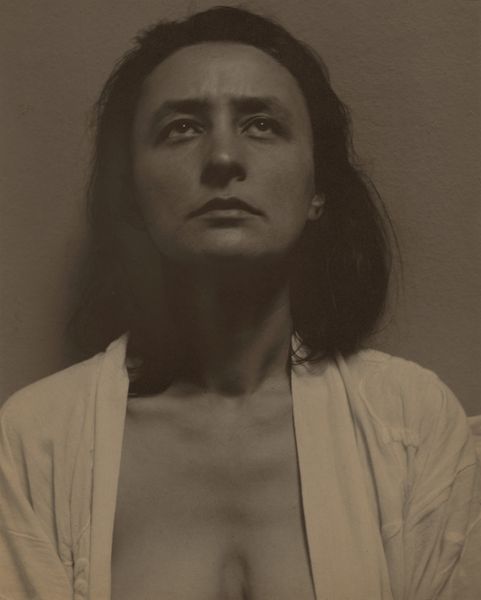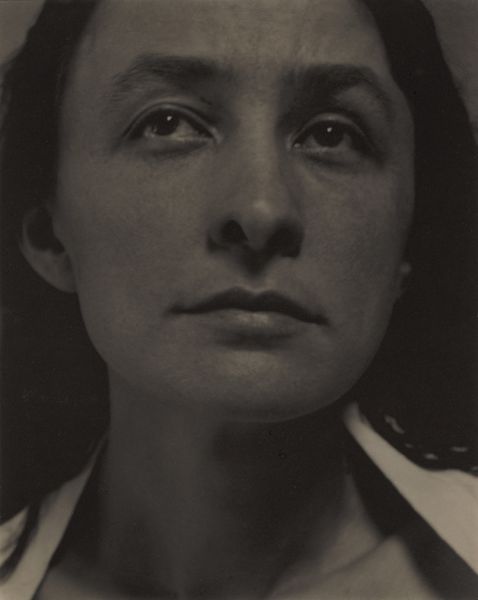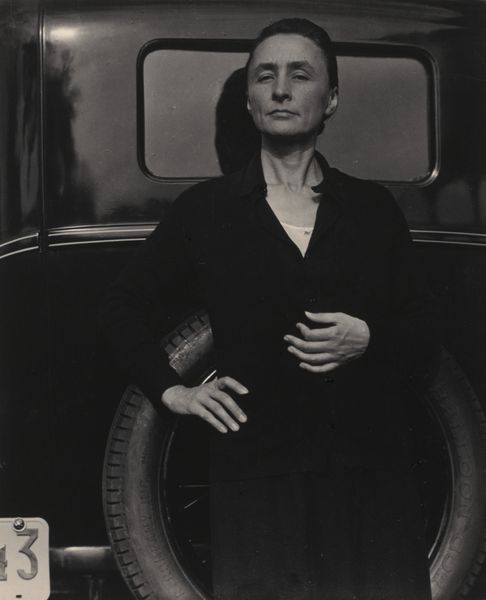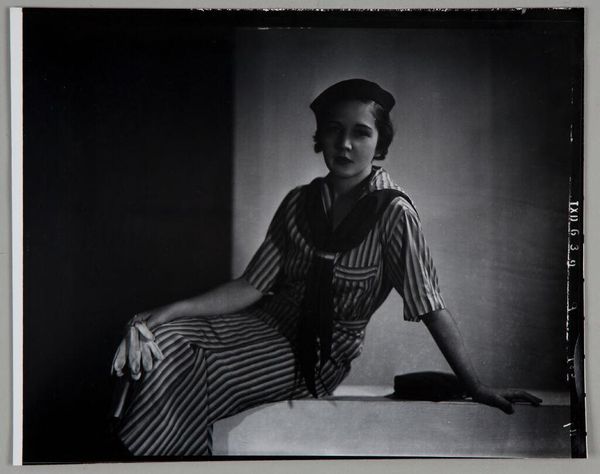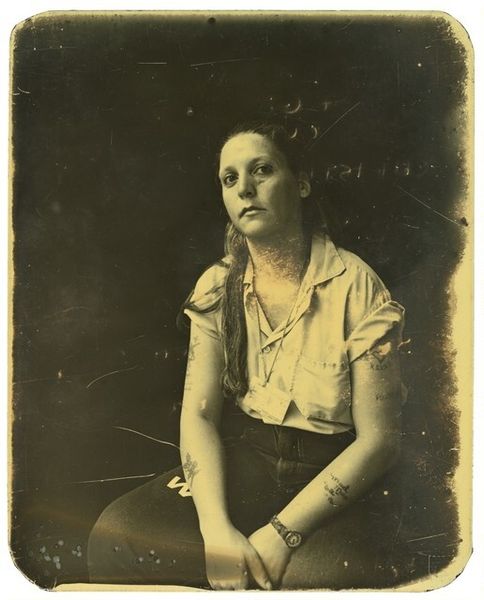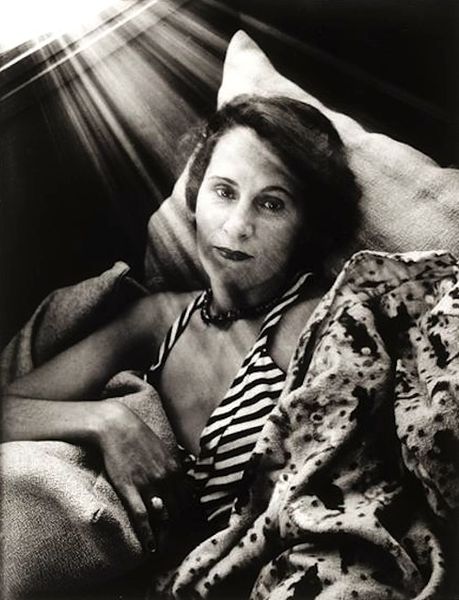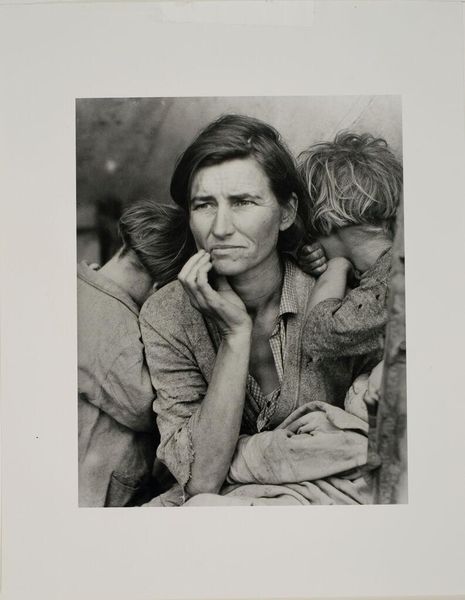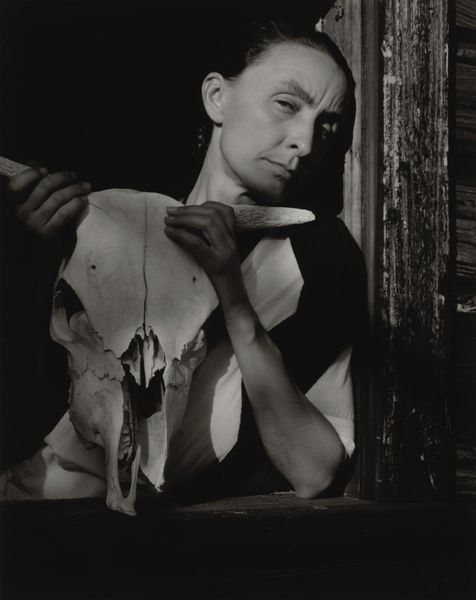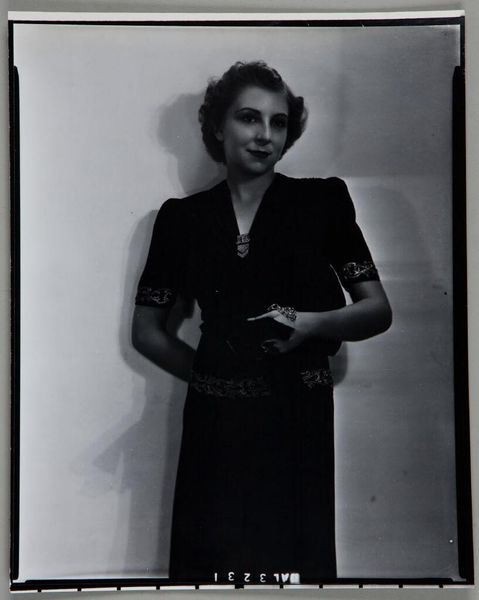
Nettie Featherston, wife of a migratory laborer with three children, near Childress, Texas c. 1938 - 1959
0:00
0:00
photography, gelatin-silver-print
#
portrait
#
black and white photography
#
photography
#
black and white
#
gelatin-silver-print
#
monochrome photography
#
realism
#
monochrome
Dimensions: image: 24 × 19 cm (9 7/16 × 7 1/2 in.) sheet: 25.4 × 20.32 cm (10 × 8 in.)
Copyright: National Gallery of Art: CC0 1.0
Editor: Here we have Dorothea Lange’s gelatin-silver print, "Nettie Featherston, wife of a migratory laborer with three children, near Childress, Texas," probably taken sometime in the late 30s. The stark monochrome immediately creates such a feeling of quiet solemnity for me. How do you interpret the composition? Curator: Formally, I find the work striking. Note how the figure's placement in front of the dark void accentuates her form. It invites a careful consideration of tonal gradations; observe the subtle modulations in the mid-tones and how the composition employs contrasting textures. The sharp vertical lines, offered up by the architectural features of the frame within a frame, set against the curve of her head. These yield a very balanced portrait. Editor: So, by isolating Nettie against such a dark, featureless background, does Lange draw our eye more intently to her? Curator: Precisely. And consider her hands; see how they are positioned, clasped loosely but purposefully in the center of the frame, drawing us toward this nexus of vulnerability. Her eyes are lowered, avoiding our gaze; she recedes from our voyeurism by declining an active part in its transaction, drawing the focus towards the structure and tonal balance, toward the balance inherent to the piece. Editor: The detail is fascinating; it emphasizes her age, perhaps her weariness, through her fine hair and lines of her face, though she might not be an old woman. The play of dark and light feels very intentional, giving a particular feeling, despite not knowing her personally. Curator: It is through the meticulous balance of light, form, and texture that the photograph finds its most effective voice, revealing far more about structure than subject. I feel that is part of the broader objective—to underscore the formal essence that supersedes the personal narrative. Editor: I see what you mean. Initially, I interpreted the expression and subject position, but focusing on these structural features lends new insights into the aesthetic considerations that might outweigh what I thought I knew. Curator: Indeed, we are prompted to contemplate not just what is depicted, but also the means by which it is conveyed.
Comments
No comments
Be the first to comment and join the conversation on the ultimate creative platform.
